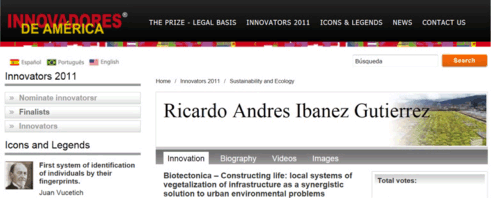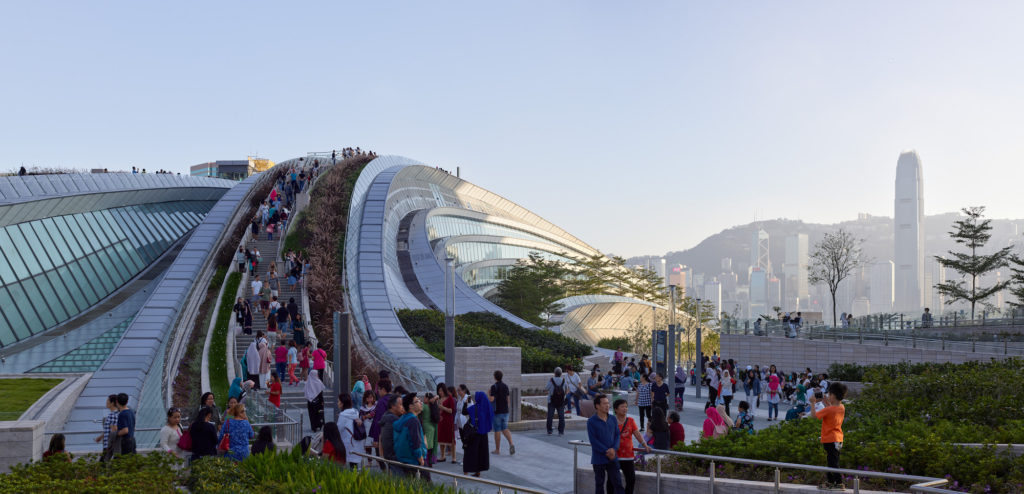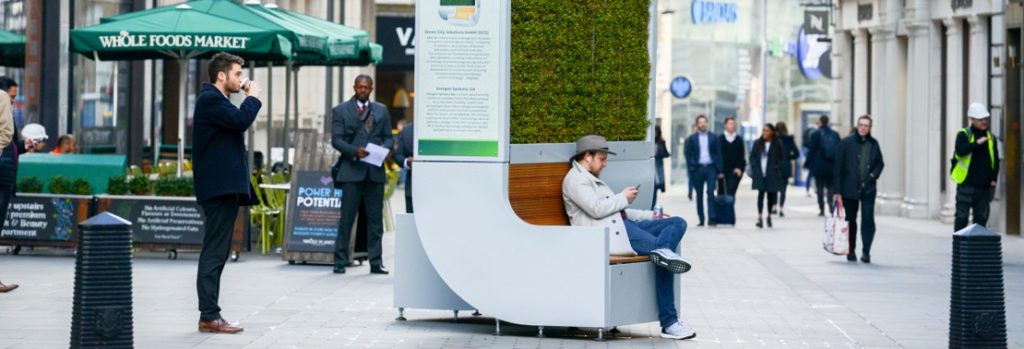Last November Aramis and I met Colombian architect Andres Ibañez of Biotectonica S.A.S. and PhD candidate at the University of Hong Kong – among other things – at the WGIN Mexico City World Green Roof Congress (El Congreso Mundial de Azoteas Verdes México 2010) – where he also presented. What an interesting guy! He has a large body of research and completed works in both Hong Kong, his present city of residence, and Bogotá, his hometown.
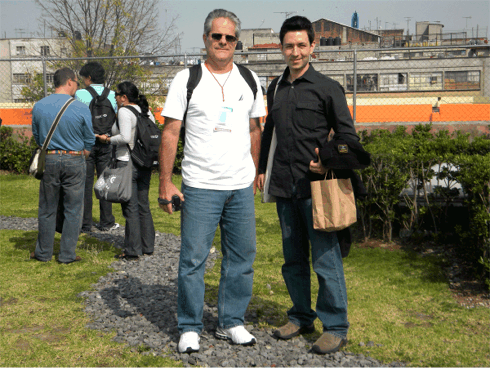
Next month we will be highlighting both in our Guest Feature Article entitled “Pioneering Vegetated Architecture in Colombia: From Research to Regulations,” which is very impressive, indeed.
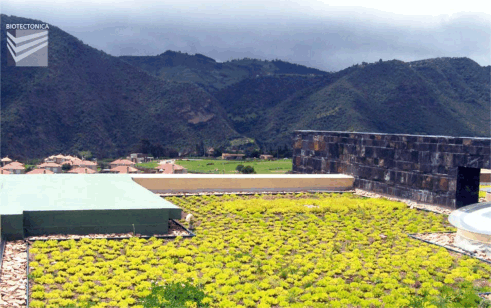
Abstract:
“The practice of vegetated architecture in Colombia is in the process of being consolidated as a feasible technological choice. This paper explains the local process of green roofs dissemination initiated with a research project at National University of Colombia and accounts for the state-of the-art both in public and private sectors. Six topics are addressed:
1) The stage of transferring scientific knowledge from a research-based approach to the practice;
2) determination of key urban problems and technical parameters for experimentation regarding substrate, draining systems, vegetation and whole systems is explained;
3) mechanisms of university-market government engagement to overcome cultural and disciplinary barriers;
4) criteria for future Bogotá green roof guidelines under development;
5) appropriate technological strategies for green roofs in response to local conditions.Issues of creativity, integration and quality are addressed in order to encourage a democratic practice of green applicable to low-cost projects. Some local strategies are described in which an integrative approach was followed to provide solutions to multiple design problems. Finally, at this point in time, Colombia is facing new challenges for the promotion of a high-quality and responsible long-term application of green roofs in the future. These challenges are described.” ~ “Pioneering Vegetated Architecture in Colombia: From Research to Regulations,” 2011
Andres has also just finished writing the official Green Roof Guidelines of the City of Bogotá which will be soon incorporated into their sustainable building standards. For this he reviewed the most advanced guidelines and standards worldwide, including FLL and ASTM, and came up with a unique approach for Bogotá. Once he has the green light from the Secretary of Environment, we’ll be able to share more with you.
Yet, now we are asking for your votes from all around the world before November 7th in support of Andres and greenroofs as being a finalist in the “Innovadores de America“ – Innovators of America – contest under the Sustainability and Ecology category which:
“Includes innovative projects that contribute and provide solutions to problems related to the preservation of the environment. Projects that contribute and in some way complement and increase sustainable development and adequate exploitation of resources, facilitating responsible and beneficial use of natural resources.” ~ Innovators 2011
Andres Ibañez is a finalist under Innovation: Biotectonica – Constructing life: local systems of vegetalization of infrastructure as a synergistic solution to urban environmental problems. Although the general site is in Spanish, the write up is in English as follows:
“Research, development, implementation, validation and dissemination of: local light and self-regulated systems of vegetalization of infrastructure (bio walls and bio roofs) using local waste materials and special vegetable species to improve the technical performance of buildings and create positive impact in urban areas environmentally deteriorated.
Biotectonica is the practice of building spaces with live vegetable materials instead of using conventional inert materials. The pioneer study in Colombia avoided inert materials and conventional practices in building construction and focused on the technological challenge of managing sustainable interfaces among infrastructure works and use special vegetable covers adapted to Bogota ´s climate, using local resources, recyclable, and reutilization of materials and innovative design of specialized components. We had three main objectives:
1) Achieve viability of implementation at low cost, 2) special technical applications for the buildings, and 3) produce positive impacts in deteriorated urban sites due to environmental problems.
The vegetalization systems of infrastructure developed and manufactured by Biotectonica are economical and light weight, make use of underutilized roofs and facades of buildings and offer a synergistic and economical solution to the most critical urban environmental problems: air pollution, excess water runoff, deficit of green areas, effect of heat islands, and destruction of biodiversity habitat. As of June 2011, Biotectonica had installed 5,374 square meters of its vegetalization systems in 13 buildings and had designed the adaptation of 28,387 square meters in 20 buildings. The systems are manufactured in Bogota with recycled plastic, waste bricks, compost of organic waste, industrial waste and other waste materials that comply with specific requirements of lightness, drainage capabilities, thermal insulation, acoustic insulation, and water retention. Over 20 vegetable native and adapted species have been studied and used which can be self sustainable in the developed areas, with the rain and environmental conditions of Bogota.
Several innovations to vegetalization systems and their components were applied:
1. Light system of drainage optimization in PEAD covered for industrial productions and mass commercialization. Already in use.
2. Adaptation of conventional construction components for implementation of low cost vegetalized infrastructure systems for low income sectors.
3. Green wall cell system (Bio roof)
4. Six measurements of light substratum of local granular components for various infrastructure vegetalization systems.
5. Matrix and design and adaptation methodology for specific buildings.The following positive impacts were achieved:
1. Creation of a means rain water retention which guarantees reduction of at least 37% of the volume and rate of runoff water to help solve the problems of floods in the city.
2. Installation of a means to hold rain water which reduces the amount of rainwater in Bogota ´s sewage system by 2,953 million per year and helps with the hot weather.
3. Creation of 5,374 square meters of green areas.
4. Reuse of 130m of brick solid waste and industrial waste.
5. Creation of 86.5m of compost from organic waste.
6. Recycling of 9.3 tons of plastic.
7. Creation of a natural means that captures approximately 1,082 tons of PM10 a year from polluted air in Bogota and other cities in Colombia
8. Natural production of oxygen required by approximately 5,000 persons per year
9. Implementation of an efficient means for acoustic and thermal insulation to improve conditions of more than 50,000 m of interior spaces.” ~ Andres Ibañez, Innovadores de America 2011
Awesome work! Here are just a few representative projects which you’ll learn more about in November:
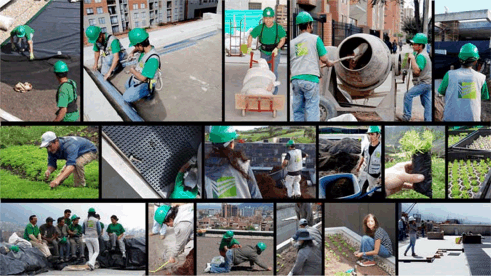
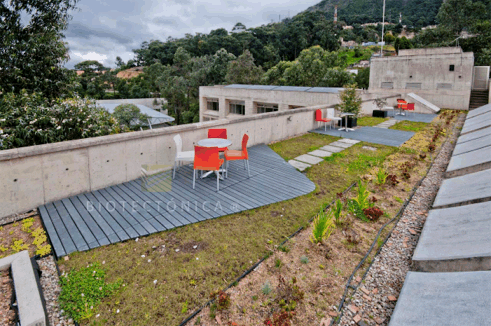
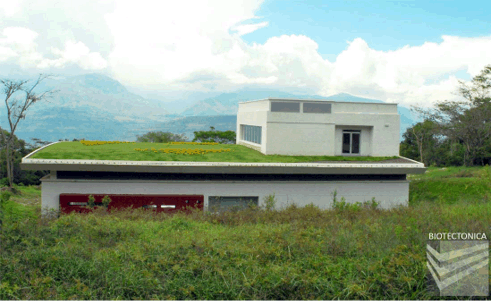
Andres describes his company as follows:
“Biotectonics is the practice of building spaces with living material instead of using conventional inert materials. BIOTECTONIC is a technology-based company founded in 2009 after a pioneer research of the Master of Building at the National University of Colombia. This research was the first in the country and one of the former in Latin America to study and validate living roof technologies. BIOTECTONICA develops and implements greening infrastructure technologies addressing the local economic, cultural and environmental challenges and taking into account the particular conditions of every single project and client.” ~ Andres Ibañez Gutierrez
Andres created a short animation last week that he translated into English, now on YouTube:
The bottom line is that we should support each other within our industry, don’t you agree? So, please join me in voting (I already did) for Andres – only one vote each.
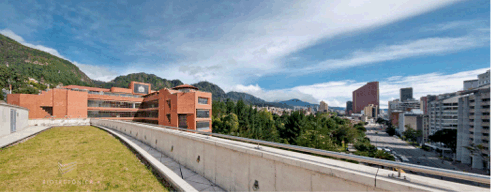
Let’s advance green infrastructure in Colombia and beyond…support this project with your vote now!
~ Linda V.
 Greenroofs.comConnecting the Planet + Living Architecture
Greenroofs.comConnecting the Planet + Living Architecture
